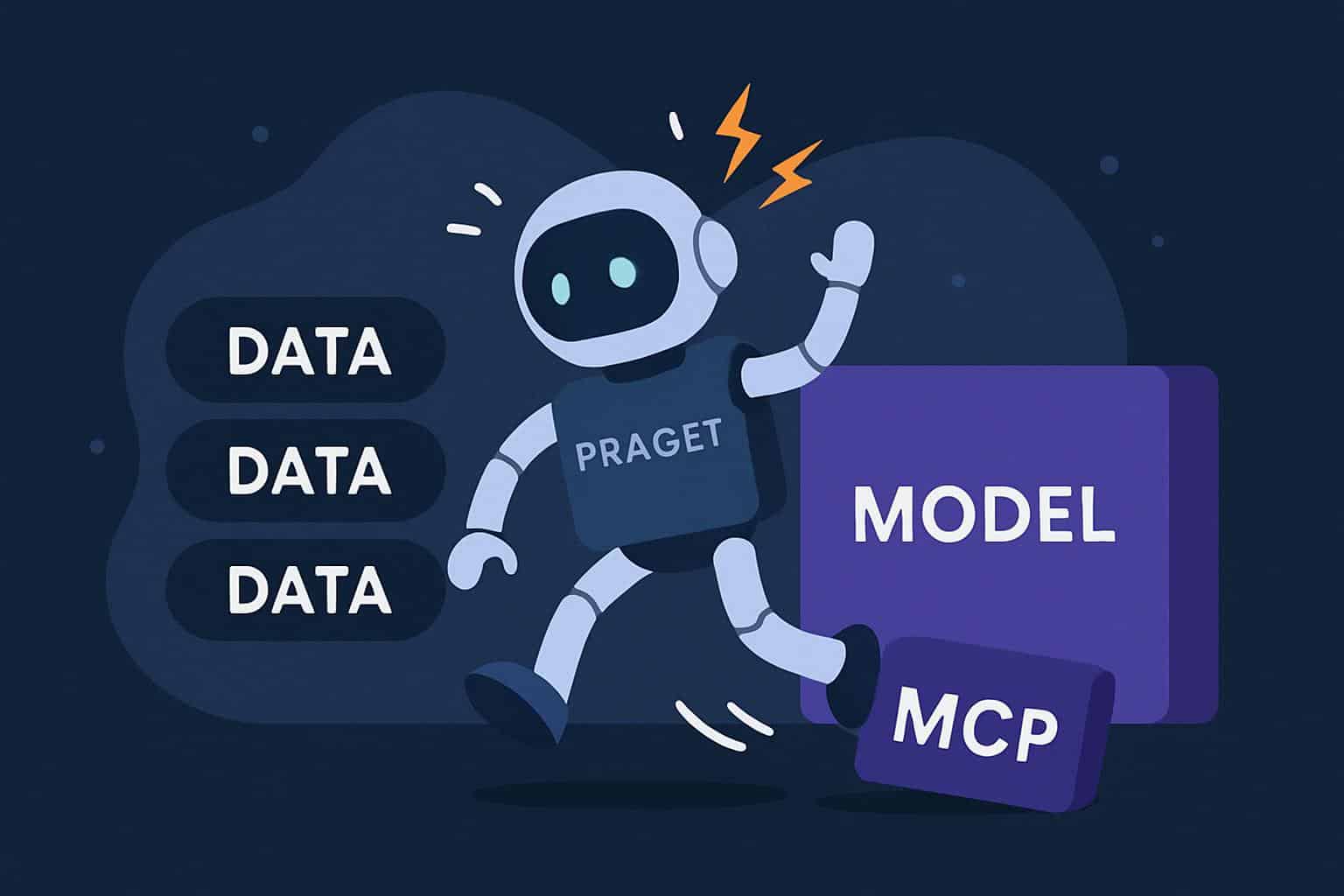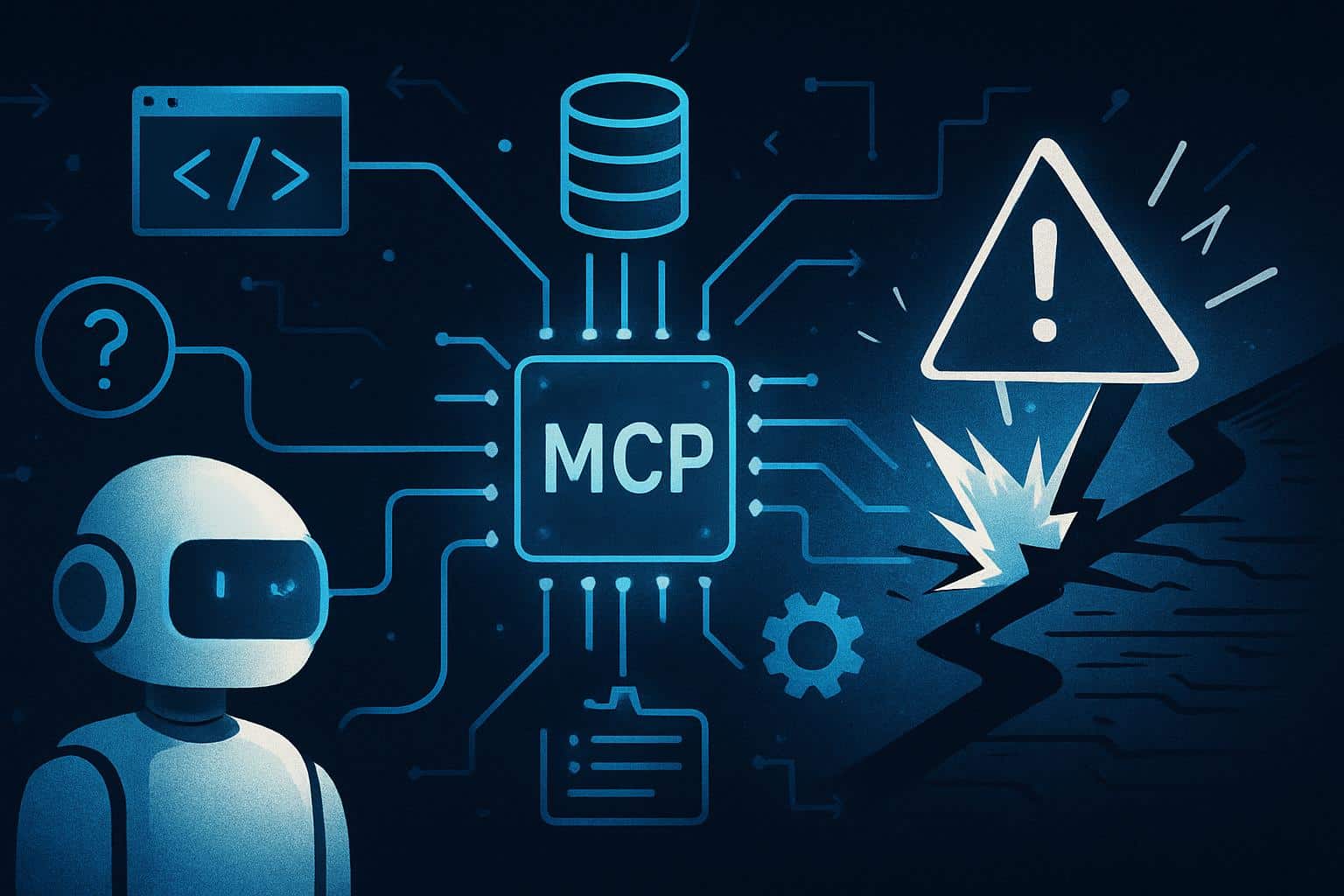Model Context Protocol claims to offer a clean bridge between software-based AI agents and the software and data they need in order to do real work. In reality, even the best of systems break down when MCP tightens one question into a series of tool choices, API calls, and cross-server dependencies. The result is all too often latency, thrash, and only partial answers — exactly what the enterprise doesn’t want to see when they are automating knowledge work.
Why MCP Stumps Even the Most Advanced Agents
MCP, as described by Anthropic, is a standard wire so that agents can talk to other tools, databases, and business apps via relational schemas. That framework is essential — and it also sets the bar. An agent has to pick the right tool, respect the schema, keep state over the span of multiple turns, and manage calls across multiple servers while dealing with rate limits, errors, and changing context. Generative models are by nature probabilistic: small mistakes at early steps snowball into side trips and dead ends.

“Imagine a complex multi-step planning task, such as planning a week-long hiking loop from Denver. The agent might have to request park information, trail condition updates, weather data, and hiking directions from various MCP-enabled services. It must order calls, resolve conflicting outputs, and then generate a coherent plan. A wrong choice of tool or an inaccurate schema may drive the agent into a mode of retry and redundant queries.”
What the Benchmarks Reveal About MCP Agent Performance
Three separate efforts — MCP-Bench by the team from Accenture, MIT-IBM Watson AI Lab, and UC Berkeley; MCP-AgentBench from the University of Science and Technology of China; and MCPMark at the National University of Singapore — reach startlingly similar conclusions. Response times degrade, performance drops, and interaction turns balloon as tasks are moved from single-server scope to multi-server scale. Strong models are still in the lead, but none can entirely resist the “exploratory loops” that never move a task forward.
MCP-Bench consists of 250 tasks used to assess structural coherence, dependency orientation, parallelism efficiency, and reflective adaptation — critical aspects of long-horizon planning. The Chinese team experiences this gradual decay whenever agents must chain sequential calls and honor cross-tool dependencies. The NUS group emphasizes the difficulties in dealing with an increasingly large interaction history and the necessity of reliable error handling (and even self-correction) instead of ‘blind’ trial and error.
More optimistic than simply drawing the same conclusion some of us did is the news from researchers that larger, more competent models tend to plan better and squander fewer turns. Some top open-source models even rival proprietary systems on MCP, showing that, in MCP task performance, training data and agent design may matter at least as much as the size of the model.
Where the Bottlenecks Occur in MCP Agent Workflows
“Patterns of repeated modes of failure emerge across studies. Agents over-submit tools given ambiguous descriptions of tasks. They select plausible-but-wrong tools from overcrowded menus with inconsistent titles. They deviate from the pattern under stress, or they ignore upstream requirements in long context chains. And it is hard to stitch together partial results returned at different latencies from different servers.”

These are not the problems of “knowledge,” but control: planning over long horizons, keeping track of state, coordinating side effects. MCP exposes these blind spots because it pulls its agents out of the sandbox environment and into the filthy, multiple-kilometer-long sausage selection lines (queues) where all missteps hurt in time and tokens.
How to Prevent Spreading the ‘Virus’ in MCP Systems
- Train for tool use, not just prose. A joint effort between the University of Washington and the MIT-IBM Watson AI Lab released Toucan, a large publicly available tool-agentic dataset with millions of MCP-style interactions. Training on such data has enabled smaller open-source models to outperform larger models that do not have task-oriented tool-use training, closing the performance gap with respect to MCP benchmarks.
- Adopt planner–executor architectures. Decompose responsibilities so that a lightweight “planner” writes a high-level tool sequence, and an “executor” safely makes schema-constrained invocations. Add a lightweight verifier which validates arguments against JSON schemas before dispatch, and a loop-detector to prevent repetitive loops with corrective hints.
- Engineer the tool layer for comprehension. Publish truthy human-readable manifests, prune near-duplicate tools, and prefer small composable actions with strong types & idempotency. Well-chosen names and consistent argument schemata diminish mis-selection and malformed calls to a great degree.
- Orchestrate for efficiency. Parallelize independent calls, cache deterministic responses, stick to step budgets, and apply exponential backoff on rate limits using server-side controllers. Aggregate interaction history into structured state instead of raw logs (so the agent only has to carry the “right” amount forward for its next decision).
- Measure what matters. Measure success by scope (single vs. multi-server), number of turns per task, schema error rate, and time-to-first-meaningful-result. MCP-Bench, MCP-AgentBench, and MCPMark benchmarks give you a reference point; set up these metrics in your CI and catch regressions before releasing to production.
The Enterprise Outlook for MCP and Agent Automation
The playbook for CIOs is grounded: begin with narrow, high-value workflows across one or two MCP servers, instrument everything, and scale as reliability improves.
Match a robust model with MCP-focused fine-tuning, thoughtful tool curation, and strict checks for schema and loops. As companies such as Deloitte have shared, reliable AI wins — so don’t just invest in model horsepower; also invest in observability and recovery paths.
MCP isn’t the problem; it’s helping to illuminate where today’s agents need help.
With focused training, intentional agent design, and rigid orchestration, teams can turn the protocol from an obstacle into a catalyst for real-world automation.

